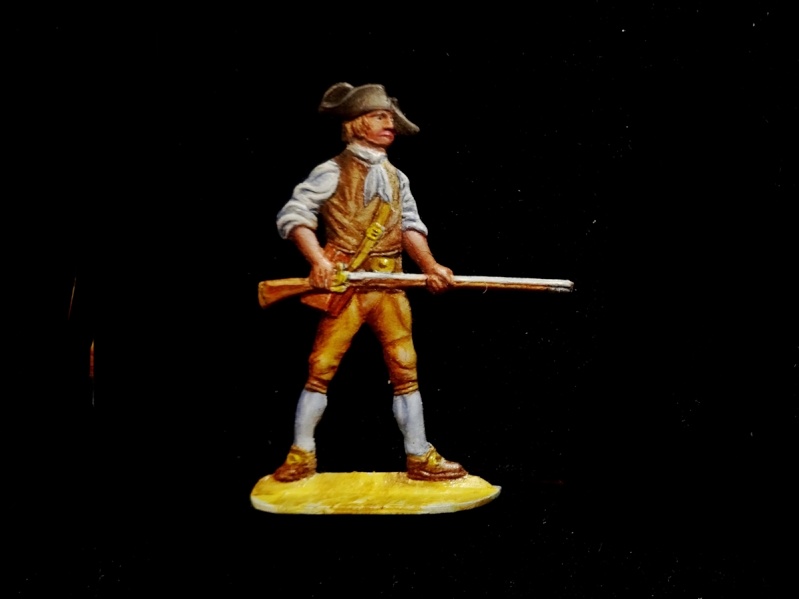These two flats, Continental Infantrymen of the American Revolutionary War (ARW 1775-1783), were graciously offered and shipped by Marko. It was for me an excellent opportunity to focus a bit on this period of history and continent I am less familiar with, considering my European origin and background, and despite having a cousin born in the USA and who lived in Brooklyn at NYC and whom I visited several times in the years 80’s ad 90’s. Thank you Mark therefore.

Drawing : Nesselberger, Engravor : Dr. Söllner (Sö) Editor : Wolfgang Hafer, ID: WH US10 and WH US11.
After studying the history of this very active period, and the regiments of the American, the British and the French armies, I have eventually selected to represent two characters from the British Loyalist forces, more specifically from the Loyal Queen’s Count Militia erected in 1778.
(Reference: Military Uniforms of America; The era of the American Revolution 1775-1795, John R. Elting 1974; pp 50-51)
Some historical background:In July 1776, the American
Continental Congress formally declared independence. The British were meanwhile mustering forces to suppress the revolt.
Sir William Howe outmaneuvered and defeated Washington, capturing New York City and New Jersey. Washington was able to
capture a Hessian detachment at Trenton and drive the British out of most of New Jersey. In 1777 Howe's army launched a campaign against the national capital at Philadelphia, failing to aid
Burgoyne's separate invasion force from Canada. Burgoyne's army was trapped and surrendered after the
Battles of Saratoga in October 1777. This American victory encouraged France
to enter the war in 1778, followed by its ally Spain in 1779.
In 1778, having failed in the northern states, the British shifted strategy toward the southern colonies, where they planned to enlist many Loyalist regiments.
After the battle of Long Island, the British command began the re-organization of the militia of Long Island and other portions of New York State under their control. Some 800 men in stand of arms for the loyal inhabitants of Queens county.
Queens was established in 1683 as one of the original twelves counties of New York and was named for the Portuguese Princess Catherine of Braganza (1638–1705), who was at the time queen of England, Scotland, and Ireland. Queens is the easternmost and largest in area of the today five boroughs of New York City, geographically adjacent to the borough of Brooklyn at the western end of Long Island.To command the Queens County Militia, Archibald Hamilton, Esquire, a Scottish gentlemen, was commissioned lieutenant colonel (after serving in Flanders, America, West India).
Queens county was divided into districts, each of them under a militia captain who’s role was to keep an exact return of the number of men in it fit to beat arms, with strict discipline.
The Loyalists militia performed duties involving mostly coast watching, costal defense against raiding American whaleboat parties; they also had to contribute and deliver material at their own expense, repair and expand British fortifications on Long Island.
The officer’s uniforms were from a regimental order of February 7, 1780: Colonel Hamilton desires that the officers of the Regiment of Loyal Queens County will provide themselves immediately each with a uniform or regimentals. It has to be scarlet, faced with blue, with white lining, white waistcoat and breeches, and silver buttons, with a silver epaulet, a well-cocked had with silver buttons and loops and a silver hat band.
Nothing was said about men’s clothing, except that it should be clean. The sergeant is shown with improvised uniform coat and a home-made halberd. The weapons and equipment seem to have been whatever could be spared. In June of 1778, the Queens County men took over the muskets with wooden ramrods and the old cartridge boxes.
They are oil painted, undercoated with white acrylic. Total painting time is 17 hours.
The officer:

The soldier:
